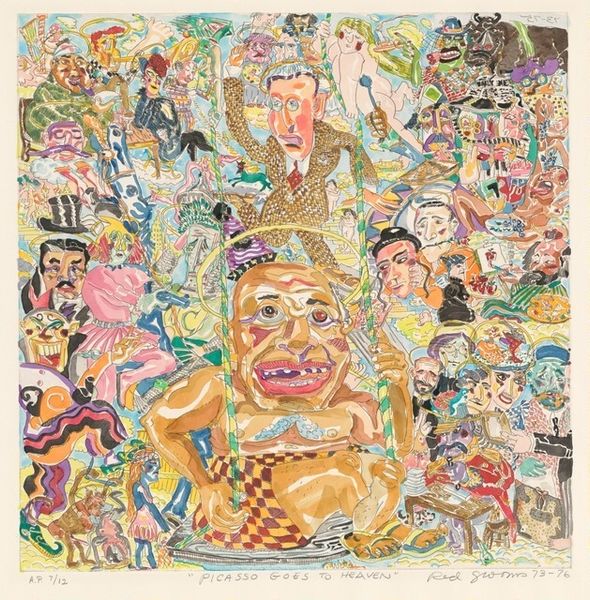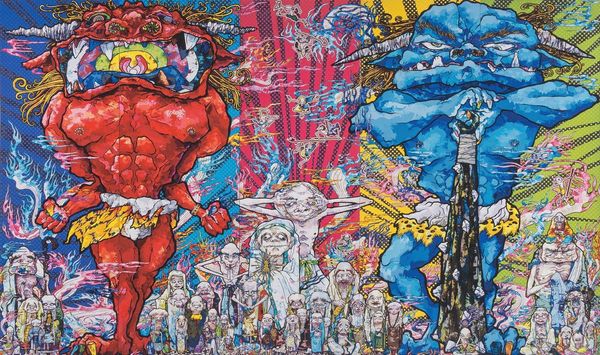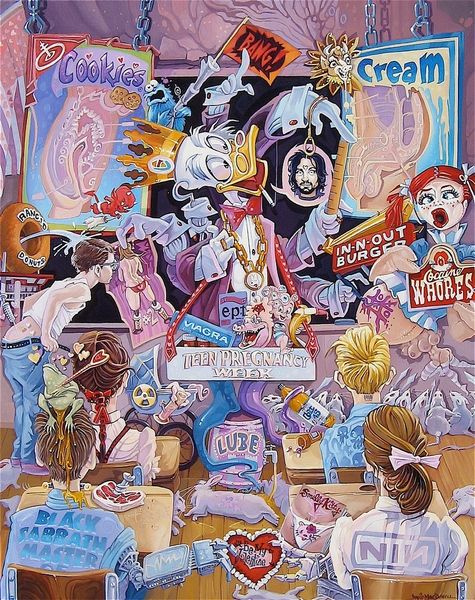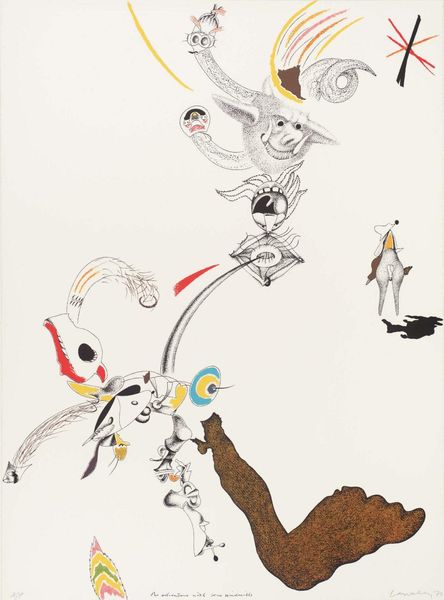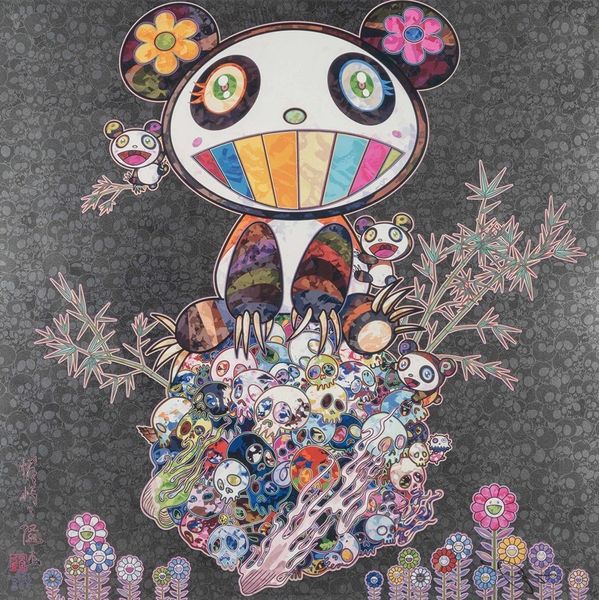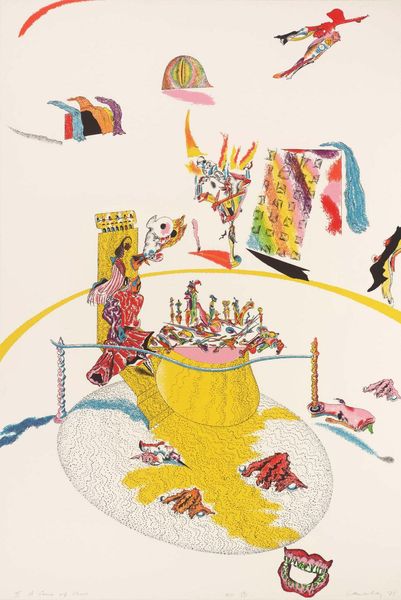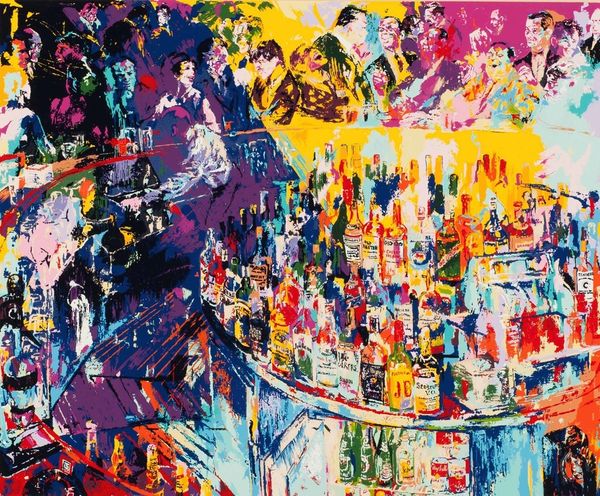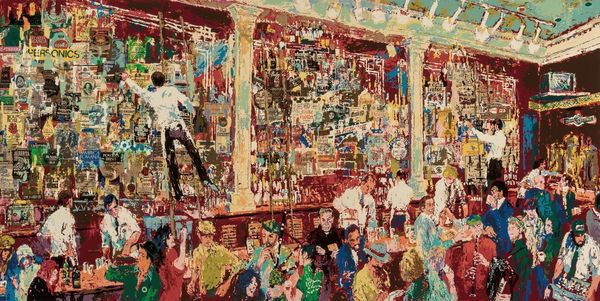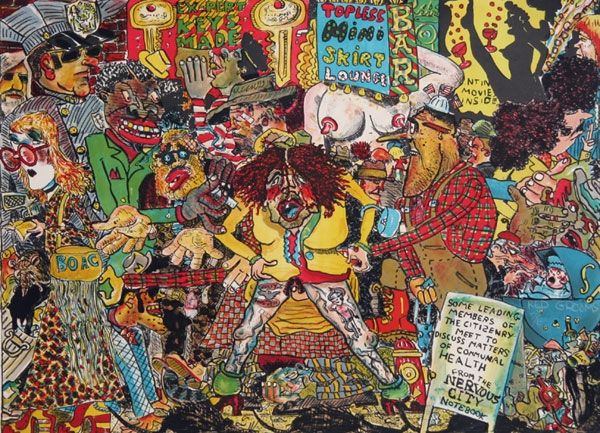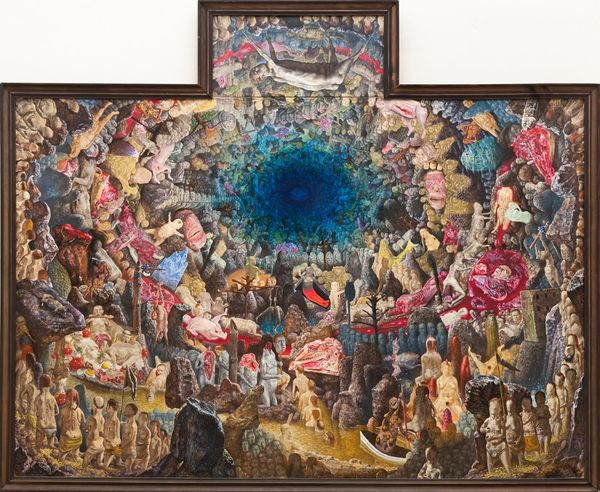
#
neo-pop
Copyright: Modern Artists: Artvee
Curator: As we contemplate Takashi Murakami’s "Phantasma" from 2016, rendered with acrylic on canvas, what is your initial reading of this composition? Editor: It's immediately striking—a kind of psychedelic, densely packed tableau vivant, hovering between the sacred and the grotesque. There is certainly tension created through this balance. Curator: I would agree. Murakami often interweaves high and low art references. His Superflat aesthetic serves as both a commentary on post-war Japanese consumer culture and as a means of collapsing traditional artistic hierarchies. He not only employs but orchestrates a complex studio practice; it’s more like a factory. I wonder how that method speaks to contemporary artistic production? Editor: The canvas's flat picture plane certainly pulls the eye around; everywhere there’s another visual jolt. I see the layering of grotesque figures juxtaposed with flatter, almost cartoonish elements, a very active ground that doesn’t allow the eye to rest. Formally, that disrupts traditional notions of composition, right? Curator: Precisely! And let’s think about Murakami's biography: his early work in animation production and design and how that work is crucial in reading the painting's symbols. They reveal a layered narrative about anxiety in today’s consumer and manufacturing world. Editor: Right, this blending—his factory production method meeting themes of the grotesque and divine figures—create interesting dialogues about authenticity, particularly in light of Murakami’s cultural background. I can see connections to manga as well as Buddhist iconography in the arrangement of the figures. Curator: That duality is very characteristic. What some see as a commentary on contemporary alienation, others interpret as shrewd business acumen—critiquing, as well as, catering to, the consumer appetite. Editor: This definitely leaves one wondering about his true aims, even his positionality. Perhaps Murakami intended this complexity; to capture the anxieties and commodification that defines modern existence. Curator: Certainly the materiality of acrylic paints and canvas further contribute. The availability and means by which we create is more important than just the image, no? It gives the artwork more depth. Editor: So, on the surface this artwork provides accessible eye-candy but rewards deeper analysis! Curator: It becomes less about surface-level attraction and more about unpicking layers of culture.
Comments
No comments
Be the first to comment and join the conversation on the ultimate creative platform.

